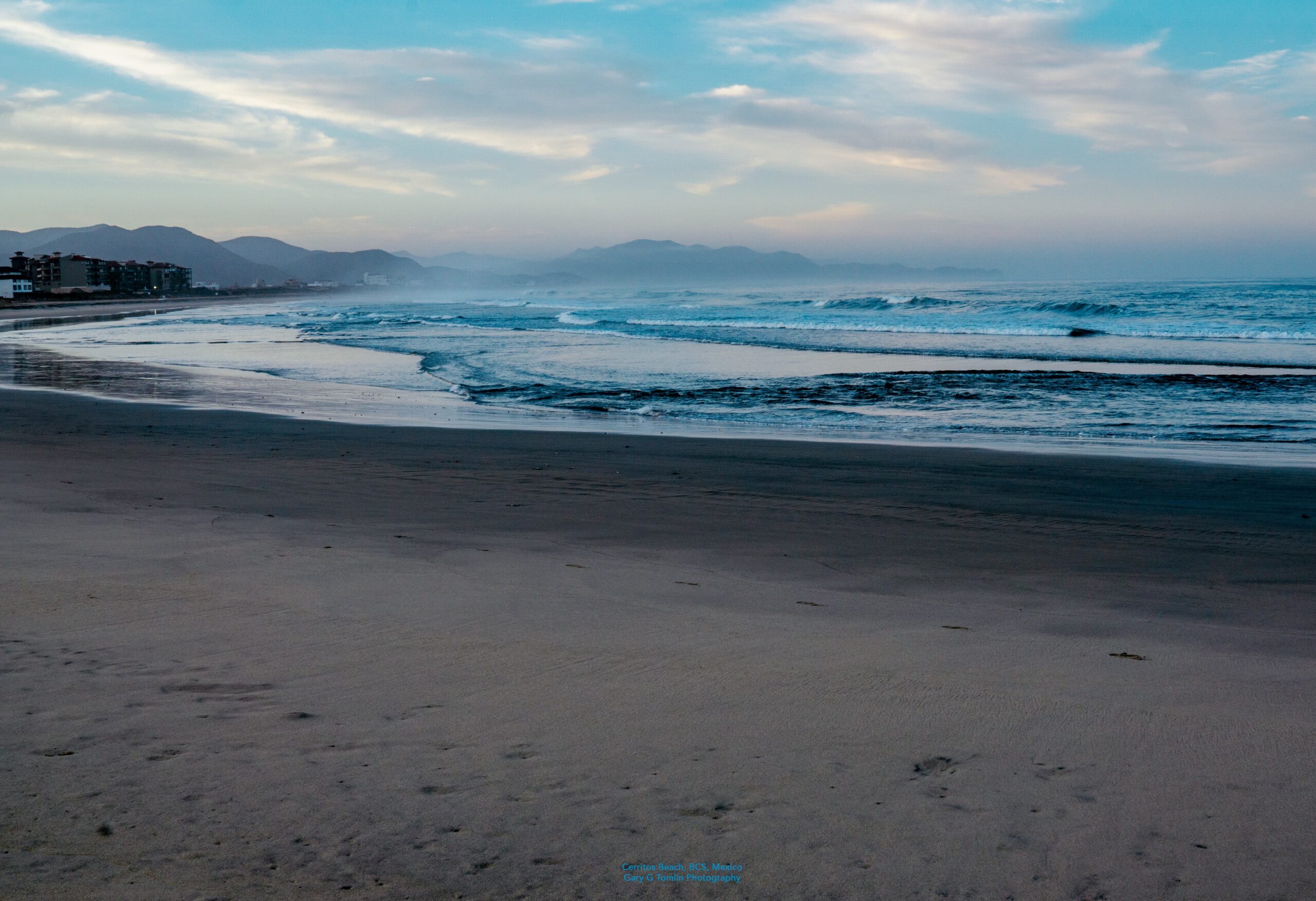
I woke up on Cerrito Beach, a popular surf break, on the Pacific coast about 30 miles north of Cabo San Lucas, near the enchanted town of Pescadero. The Tropic of Cancer dips its famous latitude into the ocean just up the road a piece.
Beach Camping was a reward.
The opposite of Arctic is Tropic, and Tropic is what I promised myself while working in Deadhorse, Alaska, last January, on the shores of the Arctic Ocean. No beach camping there. When you’re in an environmental extreme like 50-below-zero, you make promises to reward yourself, and this was my reward. The compacted capillaries in my fingers and toes were singing with joy as they return to normal in the warmth of the Sun.
Beach camping is a great privilege in Nature, and it’s hard to find beaches where it is allowed. It’s about plugging your consciousness into the energy of the ocean. The power of the waves resonates with therapeutic gentleness. You don’t really sleep in the REM sense, but the rest is wonderful. You drift in and out of consciousness as your soul floats on the rhythm of the waves.
Sailors know what I’m talking about.
You need an insect barrier, and a tent — set as close to the waves as you can get and still stay dry — works great. Take note of the tide. Your bumps and folds wallow into the soft sand to a custom fit that memory foam only wishes it could emulate.

You can get close to this by sleeping with the windows open in a surf-side hotel.
Cerrito Beach, in addition to dynamic surfing, has magnificent haciendas and condos, modest hotels, apartment rentals, and RV Parking.
The beach amenities include a restaurant and bar, surf board rental, surfing school, umbrella and chair rental. Vendors walk around selling hats, blankets and drinks. Masseuses with portable tables ply their trade.
I asked at the bar if I could put up a tent and camp.

“Anywhere you want. No one cares.”
Life is laid-back and in-tune.
During the day, I rented an umbrella and a chase, and lounged as the surfers and bikinis provided constant entertainment. With each wave the surfer takes, they exhibit grace or suffer brutality. Depending, I think, on where they put their feet on their board and which wave they choose. To make their music, they need the same precision in foot placement as a violinist’s finger placement.
I discovered that watching surfers is an absorbing, relaxing activity. Sometimes they win, but as often as not, the wave wins. Every ride is different for both the surfer and the viewer. It doesn’t get boring, and I don’t think they see it as the combat it appears to be.
Suddenly it was dark, and I was the only one left on the beach. Mesmerized. The whole day passed, and all I have to show for it is peace of mind, a wonderfully warmed body and the sunburned chins that stuck out from under my umbrella.
In addition to the consistent, challenging waves this surfing community offers restaurants, bars, dogs, and lots of Gringos.
“Ours are free range dogs. They all have loving homes, but no one ties them up,” a Gringo coffee shop owner explained their untethered status. “They go where they want.”

Surf dogs enjoy as much community love and respect as Alaskan sled dogs.
I found them to be annoying.

Pelicans are my favorite bird to photograph. Their flock, in flight, is a tight, fast moving ballet of synchronization. I was shooting pelicans fishing in the wave recessions, which is action photography on the scale of shooting hockey or football. It is difficult to frame and focus the perspective. The dogs on the beach kept harassing the birds and messing up my photos.
At another point, I was eating dinner at the beach bar, and the two House Dogs planted next to my table. Clearly, with their status as the bar’s dogs, they held themselves as Royalty and entitled to a tribute.
They were not begging; they were demanding. I extended unloving thoughts, telepathically, along the lines of, “touch my tacos and I will kill you. Seriously!”
They responded with belligerence. Dogs are saying something when they bark. I don’t speak Mexican Dog any better than I speak Spanish, but there’s no doubt, they were challenging my threat with obscene name calling.
I considered my uncharity towards them: they ask for too much. If I was eating a hotdog, I’d give ‘em a bite no problemo. But, I only had seven days in Mexico. That’s 21 meals of divine spicing, and I’m not sharing any of it with a dog.
Actually 28 meals. I never miss second breakfast in Mexico.
Every neighborhood has a storefront bakery, and first breakfast is always in a invigorating early morning walk through the hood to the bakery for a still-warm-from-the-oven pastry and a hot coffee. Second breakfast is mid-morning, and at a more traditional restaurant where a rosy señora is serving huevos and pouring coffee.
Flying to Los Cabo was easy. Car rental was easy. Driving was easy. Tropical highways almost never suffer frost heave. The right of way is always given — never demanded. That takes some getting used to.
Grocery stores are fabulous. Well appointed, and fully stocked. There are little neighborhood markets, where the meat and fresh produce are resupplied daily, and the friendly proprietor at the cash register is exceedingly pleased to have your business. The giant supermarkets, with universal variety of foods, displayed magnificently, can make the American grocery chains weep with envy. Certainly they make me weep with joy at the vast variety of foods.
The widely available, hard-packed, Mexican ice cream is wonderful.
The afternoon tradition of the siesta is especially nice.
Mostly though, wherever you go, it’s the generous, friendly, hard working, educated, Mexican people who make Mexico such a wonderful place to visit.
# 31 #

